Keywords
Infection control; Dialysis unit
Introduction
The prevalence of patients with end stage renal disease (ESRD) on maintenance hemodialysis therapy is growing worldwide. In Egypt, the estimated annual incidence of end stage renal disease (ESRD) is around 74 per million and the total prevalence of patients on dialysis is 264 per million. The patients on maintenance hemodialysis therapy are receiving 3 dialysis session per week; each session duration is 4 hours. The average of dialysis session cost depends on the health care setting for government hospitals may range from US $16 and private sector is around US$32. Each Egyptian center equipped with machines, synthetic membranes, and most of many centers using bicarbonate buffer. Defiantly, all centers whether private or government health care setting is under supervision of Egyptian Ministry of Health (MOH) [1-3].
Nurses play an important role at dialysis unit, they are the key health caregivers, meanwhile responsible for applying the main principles of infection control throughout providing all skills, and furthermore an application of infection control measure reflects their attitude based on powerful knowledge toward infection control principle.
Patients on maintenance hemodialysis therapy and staff as well are susceptible to health care- associated infection (HAIs) related to exposure to invasive therapeutic procedures [4]. Karkar et al. reported that the risk factors among patients on hemodialysis therapy that may increase the occurrence of health care associated infections are immune compromised status, invasive hemodialysis (HD) therapy which included prolonged blood exposure through vascular access and extracorporeal circuit, setting of patients close to each other while receiving dialysis session and between HD machines, frequent hospitalization and surgery, and the most importantly non-compliance health care provider to follow infection control measures throughout practices [5].
World health organization (WHO), Center for Diseases Control and Prevention (CDC) and Associated of Professionals in Infection Control (APIC) address the best practice for infection control at dialysis unit based on several evidence guidelines and recommend that the major safety measure such as hand hygiene, use of personal protective equipment (PPE), injection safety, handling patients’ items, cleaning and disinfecting the external surface of dialysis, and the surrounding environment [6-8].
Definitely, hand washing is one of the safety measures at dialysis unit can protect patient on dialysis setting from infection, because patients on hemodialysis therapy are vulnerable for infection such as hepatitis B virus (HBV), hepatitis C virus (HVC) and human immunodeficiency virus (HIV), those infections may be happen regarding too many malpractice of proper hand hygiene, contaminated dialysate and equipment or disinfection of machines and beds [9].
Hemodialysis unit is considering as unique unit unlike as general words at hospital. In consequence the risks are magnified because of the type of patients, however the sharing dialysis machine has a major role in the transmission of viral infection, health care provider caring more than patient at the same time [10,11].
Ahmed et al. established and developed an Egyptian national Guidelines for hemodialysis unit based on no practice guidelines are available in Egypt. Moreover, the implementation of international guidelines may not applicable or not suitable at Egypt because of different health system and unavailability of resources [12].
Absolutely, Nurses need to ensure that they provide a high standard of care by carry out meticulous infection control measures throughout delivering safe and effective care for patient on maintenance hemodialysis therapy. This study is highlighted the nurses compliance for applying infection control measures at dialysis unit.
Statement of the problem
The importance to establish infection control measures at health care setting by following specific guidelines at unique, complex units such as dialysis unit should be approved and implemented. Unfortunately, no Egyptian guidelines to standardize the practice of hemodialysis are implemented in Egypt3. Ahmed et al 2010, developed practice guidelines for hemodialysis in Egypt, and set Egyptian guidelines to standardize the practice at dialysis unit, furthermore highlighted specific steps for following meticulous infection control measures at dialysis unit [12].
Significance of the Study
Applying of infection control measures at dialysis unit not evaluated or documented, the literature reported that nurses’ knowledge is deficient but their performance is significantly related to their attitudes, furthermore nurses should be tend to adherent to certain infection control practices than other health care professional [13].
Patients on maintenance hemodialysis therapy are venerable for healthcare-associated infections (HAI), following infection control measure is very important particularly hand hygiene is considered the most effective tool to prevent (HAI) [14].
Subjects and Method
Aim
The study aimed to evaluate the nurses’ practices toward applying Infection Control measures at dialysis unit.
Research questions
Are nurses at dialysis unit following infection control best practice?
Research design
A cross-sectional study was applied to evaluate nurses’ performance toward application of infection control measures.
Study setting
Hemodialysis unit at central Ehnasa' government hospital, Beni- Suef City.
Study period
The study was conducted between November 2016 and January 2017.
Study sample
Purposive sample consisted of all nurses who work at dialysis unit.
Tools of the study
Tool I: Nurses’ demographic data which include age, years of experience, working hours, job satisfaction.
Tool II: Assess Nurses’ practice by using “National opportunity to improve infection control in ESRD National Opportunity to improve infection control in end stage renal disease (NOTICE) checklists”15, which included 8 checklists.
• Treatment Initiation: (Checklist #1c Access of A.V fistula or Graft for initiation of dialysis, Checklist #1a: Access of Central Venous Catheter (CVC) for Initiation of Dialysis), Checklist #1b: Central Venous Catheter (CVC) Exit Site Care).
• Medication Administration (Infection control evaluator (ICE) Checklist #2: Parenteral Medication Preparation and Administration).
• Treatment Termination (Infection control evaluator (ICE) Checklist #3a: Access of Central Venous Catheter (CVC) for Termination of Dialysis, ICE Checklist #3b: Access of AV Fistula* or Graft for Termination of Dialysis and Post Dialysis Access Care.
• Cleaning and disinfection (Infection control evaluator [ICE] Checklist #4: Cleaning and Disinfection of the Dialysis Station)
• Dialysis Supply management and contamination prevention (ICE Checklist #5: Dialysis Supply Management and Contamination Prevention).
Ethical Considerations
This study was approved by the director of Ehnasa’ government hospital, Beni-Suef City, oral verbal consent of the nurses was obtained prior to the administration of the questionnaire. The head nurse and nursing staff were informed about purpose of the study and the researcher was explained that the participation not obligatory and they had the right to refuse to participate, and all right of confidentiality was maintained.
Statistical Analysis
The statistical package for social sciences (SPSS ver.22) was used for data entry and analysis. Data were presented using: Descriptive statistics in the form of frequencies, percentage to draw the met and unmet nurses’ performance level.
Limitation of the Study
Limitation of the study can exist related to shortage of staff, patient overcrowding and may limited resources.
Results
The overall nurses’ performance regarding to infection control aspect at enrolled dialysis unit as the following from initiation of dialysis till termination of dialysis session, the number of total nurses’ were accepted to participate in the study all nurses (17 nurses) were working at selected setting, as Figure 1 showed that all nurses were female, holding diploma degree, more than two third of study sample their age between 25 to 30 years old, years of their experience ranged between 1 year to 12 years, however one third of the study sample had experience between one to three years and around 40% had experience from 9 to 12 years. Furthermore more than 75% had not job satisfaction.

Figure 1: Nurses demographic data.
Figure 2 illustrates the practice of 17 nurses who are working at dialysis unit and shown throughout 1st and 2nd observation nurses had noncompliance to perform hand hygiene before starting procedure, most of them assemble supplies beside patients’ bed or chair, all nurses wash patients’ skin over A.V fistula, most of nurses locate the cannulation site, unfortunately cannulate at the same puncture point to avoid re-cannulation.
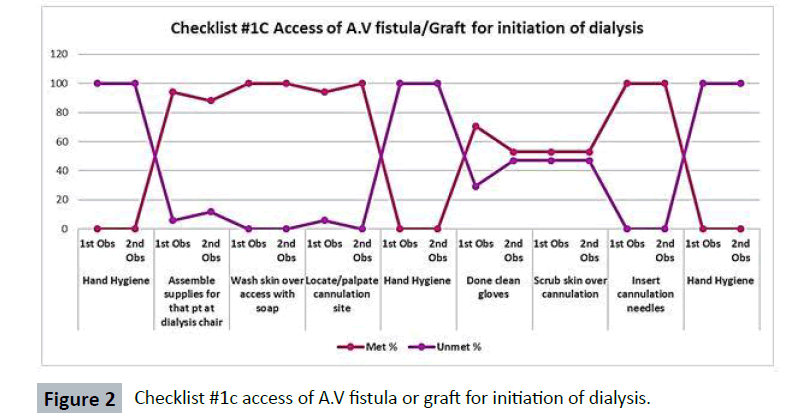
Figure 2: Checklist #1c access of A.V fistula or graft for initiation of dialysis.
Figure 3 describes the nurses’ performance at the initiation of treatment via access of central venous catheter (CVC), the hand hygiene completely ignored before, during and after the procedure, all nurses assemble supplies before, only 40% donning clean gloves, place clean waterproof sheet under CVC port, unfortunately no scrub for the exterior of CVC hubs, defiantly all nurses removed port caps, only 41% connect sterile syringes.
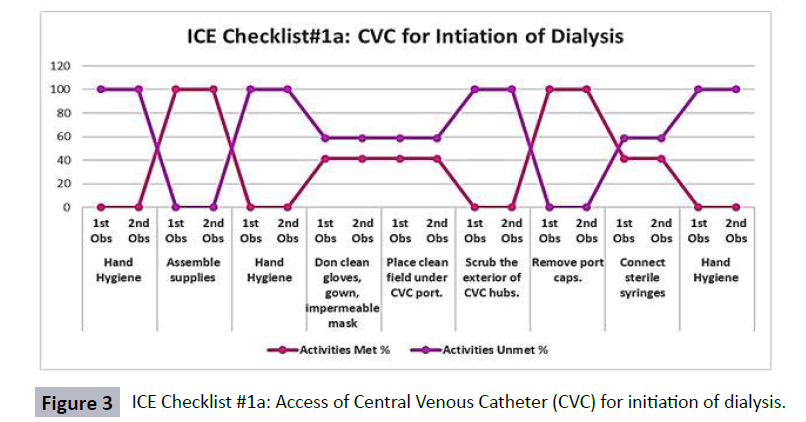
Figure 3: ICE Checklist #1a: Access of Central Venous Catheter (CVC) for initiation of dialysis.
Figure 4 shows the central venous catheter exit site care the only step seems as obligatory step which is assemble supplies to perform the procedure and around 41% done clean gloves and apply antimicrobial ointment.
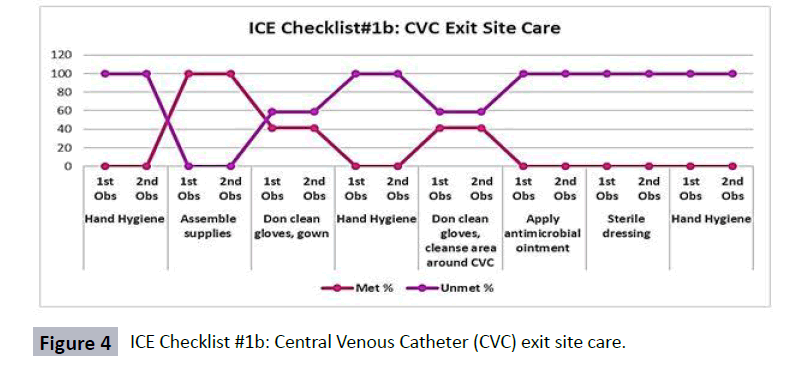
Figure 4: ICE Checklist #1b: Central Venous Catheter (CVC) exit site care.
Figure 5 illustrates the nurse’s performance regarding to parenteral medication administration and the 1st and 2nd observation were described the all nurses assemble supplies, single dose use only for one patient and discarded, multiple dose vials are only entered with a new, empty sterile syringe and needle and discarded with 48 days, and open one vial of each medication at a time, moreover discard syringe into sharpscontainer.
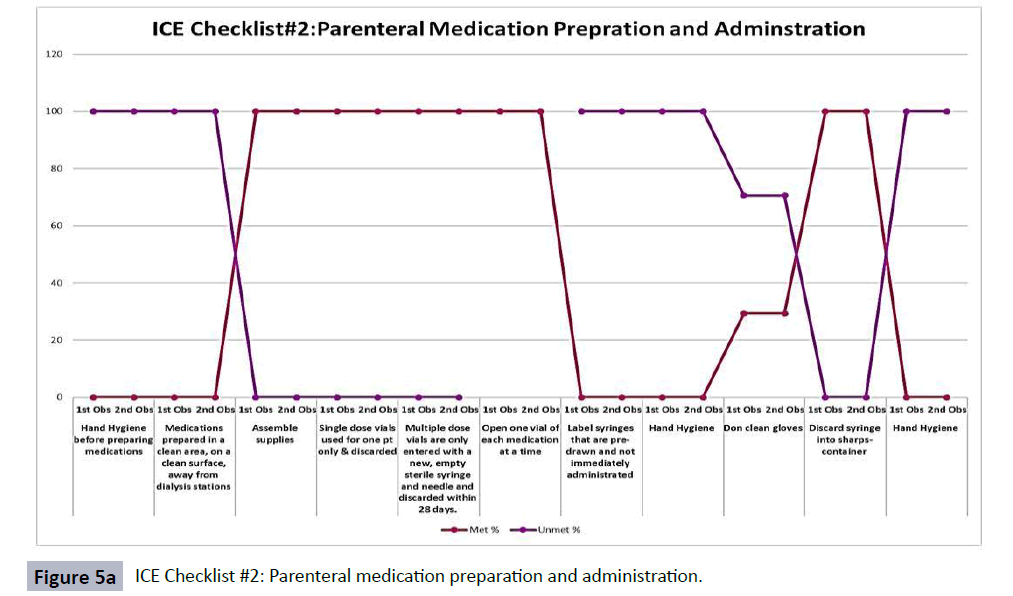
Figure 5a: ICE Checklist #2: Parenteral medication preparation and administration.
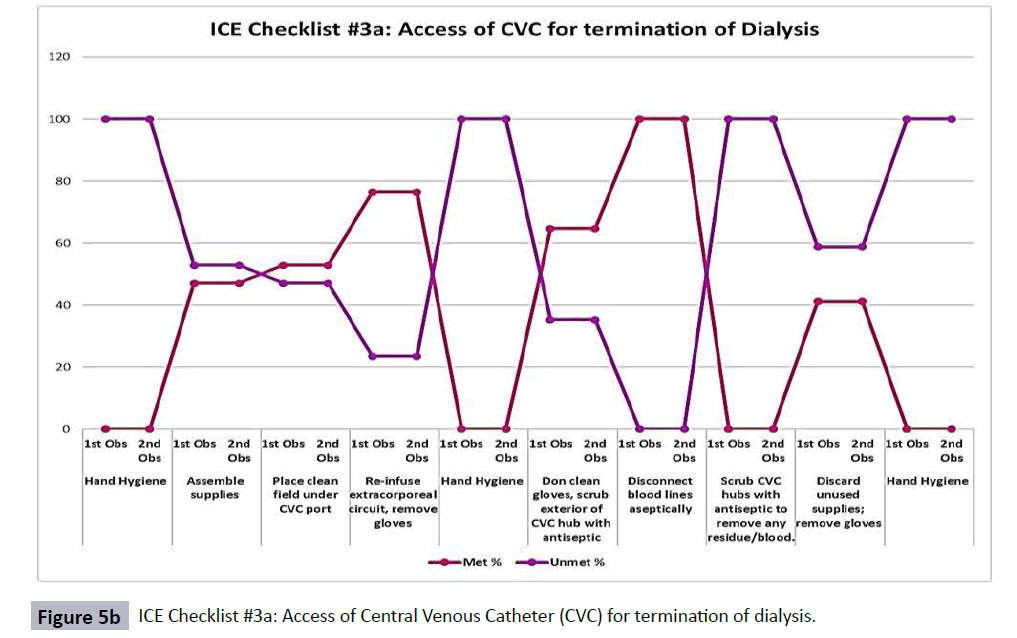
Figure 5b: ICE Checklist #3a: Access of Central Venous Catheter (CVC) for termination of dialysis.
The termination of treatment for patients’ had Central Venous Catheter (CVC), approximated half of the study sample assemble supplies and place clean field under CVC port and discard unused supplies, remove gloves, furthermore around two third of study sample reinfuse extracorporeal circuit, remove gloves, and done clean gloves, scrub exterior of CVC hub with antiseptic. Unfortunately all of them ignore hand hygiene.
Likewise, in termination process of dialysis session for patients’ had AV fistula and Graft and post dialysis session care, all nurses reinfuse extracorporeal circuit, remove gloves and discard unusual supplies. Furthermore, more half of study sample don clean gloves while removing needle. Two third of the study sample replace any blood-soiled bandage on needle site (Figure 6).

Figure 6: ICE Checklist #3b: Access of AV fistula* or graft for termination of dialysis and post dialysis access care.
Figure 7 illustrates the cleaning and disinfection of dialysis station as shown all nurses disinfect the dialysis machine and empty prime waste receptacle, and discard cloth/wipe remove gloves, moreover more than two third disinfect patients’ chair and around chair cleanness, only 47% wipe all machine sides.
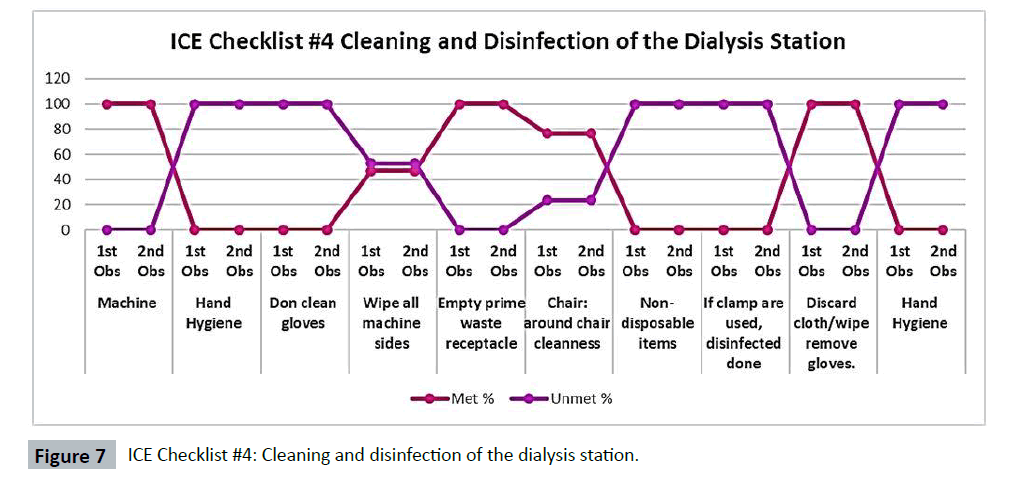
Figure 7: ICE Checklist #4: Cleaning and disinfection of the dialysis station.
Figure 8 illustrates the nursing performance regarding to dialysis supply management and contamination prevention, the findings showed all nurses kept all supplies at designed clean area and two third of the study sample didn’t bring the supplies of next patient to the station. One third of nursing staff not keep patients’ supplies in their pocket.
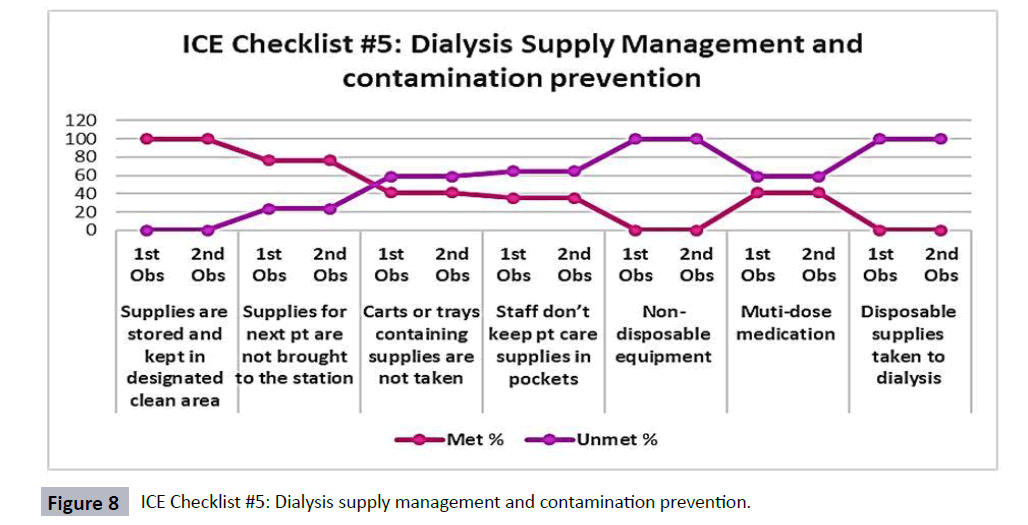
Figure 8: ICE Checklist #5: Dialysis supply management and contamination prevention.
Figure 9 shows the percentage of NOTICE checklists and the figure demonstrates that half of nurses had met most of steps for checklist #1c Access of A.V fistula or Graft for initiation of dialysis (55.87%) and ICE Checklist #2: Parenteral Medication Preparation and Administration (48.13%), ICE Checklist #3b: Access of AV Fistula* or Graft for Termination of Dialysis and Post Dialysis Access Care (48.1%), the lowest level of performance found was ICE Checklist #1b: Central Venous Catheter (CVC) Exit Site Care (22.8%).
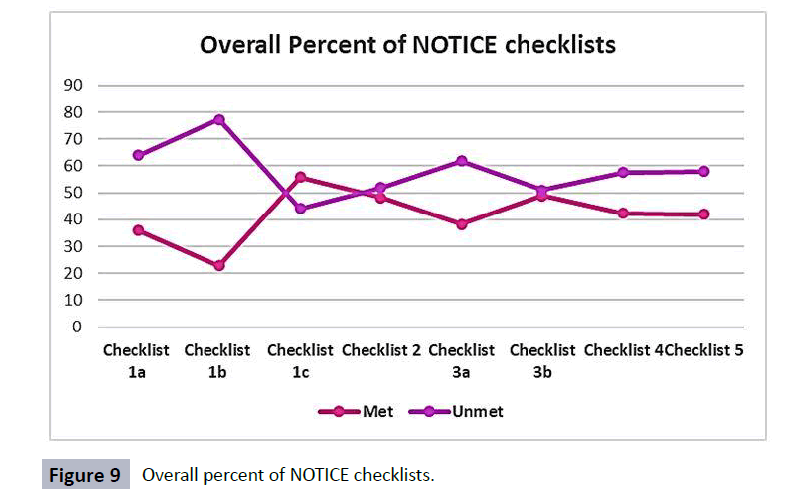
Figure 9: Overall percent of NOTICE checklists.
Discussion
Practice guidelines were developed in Egypt [12] and the main focusing on the dialysis procedure as a whole, to measure the infection control application need to assess nurses performance throughout treatment process once patient admitted to dialysis session for connection till termination of dialysis session, using of NOTICE checklists describe the nurses performance during treatment process at dialysis unit.
Infection is considering the second most cause of mortality among patients on maintenance hemodialysis therapy after cardiovascular disease [15], however, nurses have noncompliance to apply molecules infection control measures at dialysis unit could be cause harmful complication for both nurses and patients’ on maintenance hemodialysis therapy as well. The world health organization (WHO) established guidelines on hand hygiene in health care [16]. Literature showed that the major rout of transmission of heath associated infections (HAIs) is through transiently contaminated hands of the health care providers [17-26], at the present study the compliance rate of hand hygiene throughout dialysis procedure was very low, and nurses ignore to following hand hygiene in the initiation of treatment either via access of CVC or A.V fistula/graft, this findings support the result of Duong and McLaws, 2017 who are reported the hand hygiene compliance rate was low throughout of demonstration of dialysis procedure [27]. Moreover, Boyce and pittet et al. identified the most important infection control measures is hand hygiene and highlighted the compliance rate of health care works at dialysis unit was very poor [28]. Moreover, most recent study done on 18 units at Egypt conducted by Said et al. who are found that the medical team doesn’t carry out proper and enough hand washing [29]. On the other hand, recent study done at Saudi Arabia which evaluate nurses’ knowledge, attitude and practice of nurses in renal dialysis units regarding to infection control and found gaps in practice were determined 15%-18% of total sample not always compliance to hand hygiene [30].
The barrier to compliance may be large of times to demonstrate hand hygiene, shortage of staff, patient overcrowding, limited resources and lack of awareness [31].
Nurses were observed for two consecutive patients to were clean gloves during initiation of dialysis session either with patient with A.V fistula or CVC around 40% of total study sample, this finding close to the study done by Girou et al. who are determine the roles of environmental contamination and noncompliance with standard precautions in risk of Hepatitis C virus transmission in a hemodialysis unit and found that 33% of nurses were removed gloves after providing patient care [32], in the same lime one study done at Vietnam to identify the dangerous practices in a hemodialysis unit and found because of limited supply the nurses reuse of gloves28. Based on clinical practice guidelines for vascular access, the gloves should be changed at any time during the cannulation procedure [33].
Hospital acquired infection transmitted by contaminated environmental surfaces with different pathogens on surfaces [34]. The disinfection of dialysis machine between patient uses is recommended at the beginning and/or end of the day [35]. Szewczyk et al. recommended the disinfection of dialysis machine should be done after each dialysis session or after every 72 hours break in working [36]. At the present study all nurses’ compliance to clean and disinfect dialysis station and disinfect the dialysis machine. Nonetheless, only 47% wipe all machine sides. Regarding to parenteral medication administration and the 1st and 2nd observation as findings represented were the all nurses assemble supplies, single dose use only for one patient and discarded, multiple dose vials are only entered with a new, empty sterile syringe and needle and discarded with 48 days, and open one vial of each medication at a time, moreover discard syringe into sharps-container. Rebmann and bran, 2011 highlighted that parental medication should be prepared in a clean area not at the same patient area [37].
Overall total score of NIOTICE checklists were presented at the study findings was describe the nurses’ performance, and found the highest met steps were at the 1st and 2nd observations reported during initiation of treatment via A.V fistula or graft, meanwhile the lowest level was illustrated with CVC exit site care. Likewise, Chenoweth et al. reported of perfect performance for meeting each item and found the highest level of performance was during the A.V fistula access practices at treatment initiation [38].
Conclusion
Nurses are plying crucial role at complex unique unit as dialysis unit, and provide holistic nursing care with using advanced technology to care patients with comorbid conditions. Because health care provider and patient are venerable for infection contamination, must all health care provider and especially nurses following meticulous infection control skills? Based on the finding of this study using of NOTICE assessment checklists, highlighted to develop and follow strict infection control system at dialysis unit focusing on nursing staff to prevent infection transmission especially with chronic patient on maintenance hemodialysis therapy.
Recommendations
• Design Evidence-based nursing practices training program for nurses to promote patient centered care and improve quality of care.
• Hang posters in front of nurses’ eyes for steps of hand rubbing and glove pyramid to reduce the risk of cross transmission of contamination among patients on maintenance hemodialysis therapy.
• Establish follow up system at dialysis unit to ensure application of all infection control procedure.
Acknowledgement
We would like to express our sincere gratitude to the nursing staff who accepted to participate in this study.
24737
References
- Afifi A, Karim MA (1999) Renal replacement therapy in Egypt: first annual report of the Egyptian Society of Nephrology. East Mediterr Health J 5: 1023-1029.
- Barsoum RS (2002) End-stage renal disease in the developing world. Artif Organs 26: 735-736.
- Ibrahim S (2010) Quality of care assessment and adherence to the international guidelines considering dialysis, water treatment, and protection against transmission of infections in university hospital-based dialysis units in Cairo, Egypt. Hemodial Int 14: 61-67.
- Karkar A (2018) Infection control guidelines in hemodialysis facilities. Kidney Res Clin Pract 37: 1-3.
- Karkar A, Bouhaha BM, Dammang ML (2014) Infection control in hemodialysis units: a quick access to essential elements. Saudi J Kidney Dis Transpl 25: 496-519.
- https://apic.org/Resource_/EliminationGuideForm/7966d850-0c5a-48ae-9090-a1da00bcf988/File/APIC-Hemodialysis.pdf
- Mashragi F, Bernstein RS, Al-Mazroa M, Al-Tawfiq JA, Filemban S, et al. (2014) HIV transmission at a Saudi Arabia hemodialysis unit. Clin Infect Dis 59: 897-902.
- Sartor C, Brunet P, Simon S, Tanalet C, Berland Y, et al. (2004) Transmission of hepatitis C virus between hemodialysis patients sharing the same machine. Infect Control HospEpidemiol 25: 609-611.
- Hussein MM, Mooij JM (2010) Methods used to reduce the prevalence of hepatitis C in a dialysis unit. Saudi J Kidney Dis Transpl 21: 909-913.
- Ahmed AMA, Allam MF, Habil ES, Metwally AM, Ibrahiem NA, et al. (2010) Development of practice guidelines for hemodialysis in Egypt. Indian J Nephrol 20: 193-202.
- Al Qahtani A, Almetrek M (2015) Knowledge, Attitudes and Practice of Nurses in Renal Dialysis Units Regarding Infection Control in Abha City -Saudi Arabia. Egyptian J Hospital Med 66: 103-114.
- Scheithauer S, Eitner F, Mankartz J, Haefner H, Nowicki K, et al. (2012) Improving hand hygiene compliance rates in the haemodialysis setting: more than just more hand rubs. Nephrol Dial Transplant 27: 766-770.
- Health Research and Educational Trust (2014) University of Michigan Kidney Epidemiology and Cost Center, Renal Network of the Upper Midwest, Inc. (Network 11).
- Pittet D, Dharan S, Touveneau S, Sauvan V, Perneger TV (1999) Bacterial contamination of the hands of hospital staff during routine patient care. Arch Intern Med 159: 821-826.
- Bauer TM, Ofner E, Just HM, Just H, Daschner FD (1990) An epidemiological study assessing the relative importance of airborne and direct contact transmission of microorganisms in a medical intensive care unit. J Hosp Infect 15: 301-309.
- Pittet D (2001) Improving adherence to hand hygiene practice: A multidisciplinary approach. Emerg Infect Dis 7: 234-240.
- Bhalla A, Pultz NJ, Gries DM, Ray AJ, Eckstein EC, et al. (2004) Acquisition of nosocomial pathogens on hands after contact with environmental surfaces near hospitalized patients. Infect Control Hosp Epidemiol 25: 164-167.
- Larson E (1988) A causal link between hand washing and risk of infection? Examination of the evidence. Infect Control Hosp Epidemiol 9: 28-29.
- Farrington M, Ling J, Ling T, French GL (1990) Outbreaks of Infection with methicillinresistant Staphylococcus aureus on neonatal and burn units of a new hospital. Epidemiol Infect 105: 215-228.
- Gould D (1991) Nurses’ hands as vectors of hospitalacquired infection: A review. J Adv Nurs 16: 1216-1225.
- Duckro AN, Blom DW, Lyle EA, Weinstein RA, Hayden MK (2005) Transfer of vancomycin resistant enterococci via healthcare worker hands. Arch Intern Med 165: 302-307.
- Shimokura G, Weber DJ, Miller WC, Wurtzel H, Alter MJ (2006) Factors associated with personal protection equipment use and hand hygiene among hemodialysis staff. Am J Infect Control 34: 100-107.
- Kampf G, Kramer A (2004) Epidemiologic background of hand hygiene and evaluation of the most important agents for scrubs and rubs. Clin Microbiol Rev 17: 863-893.
- Duong MC, McLaws ML (2017) Dangerous practices in a hemodialysis unit in Vietnam identify from mixed methods. BMC Infect Dis 17: 181-190.
- Boyce JM, Pittet D, Healthcare Infection Control Practices Advisory Committee, HICPAC/SHEA/APIC/IDSA Hand Hygiene Task Force (2002) Guideline for Hand Hygiene in Health-Care Settings. Recommendations of the Healthcare Infection Control Practices Advisory Committee and the HICPAC/SHEA/APIC/IDSA Hand Hygiene Task Force. Society for Healthcare Epidemiology of America/Association for Professionals in Infection Control/Infectious Diseases Society of America. MMWR Recomm Rep 51: 1-45.
- Khamisa SSA, Yasina YS, Omaraa MM, Salehb NEN (2018) Safety measures in Dakhlia hemodialysis units. Menoufia Med J 31: 429-437.
- Al Qahtani SA, Almetrek AM (2017) Knowledge, attitudes and practice of nurses in renal dialysis units regarding infection control in Abha City – Saudi Arabia, 2015. Egypt J Hosp Med 66: 103-114.
- Le CD, Lehman EB, Nguyen TH, Craig TJ (2019) Hand hygiene compliance study at a large central hospital in Vietnam. Int J Environ Res Public Health 16: E607.
- Girou E, Chevaliez S, Challine D, Thiessart M, Morice Y, et al. (2008) Determinant roles of environmental contamination and noncompliance with standard precautions in the risk of hepatitis C virus transmission in a hemodialysis unit. Clin Infect Dis 47: 627-633.
- Vascular Access Work Group (2006) Clinical practice guidelines for vascular access. Am J Kidney Dis 48: S248-S273.
- https://www.cdc. gov/HAI/pdfs/guidelines/standards-ofambulatory- care-7-2011. pdf.
- Szewczyk M, Grzeszczuk K, Walski T, Suder M, Komorowska M (2013) Are disinfectant residues remained after cleaning hemodialysis machine procedure safe for patients? Przegl Lek 70: 97-101.
- Rebmann T, Barnes SA (2011) Association for professionals in infection control and epidemiology. Preventing infections in hemodialysis: an executive summary of the APIC Elimination Guide. Am J Infect Control 39: 72-75.
- Chenoweth CE, Hines SC, Hall KK, Saran R, Kalbfleisch JD, et al. (2015) Variation in infection prevention practices in dialysis facilities: results from the national opportunity to improve infection control in ESRD (End-Stage Renal Disease) project. Infect Control Hosp Epidemiol 36: 802-806.















